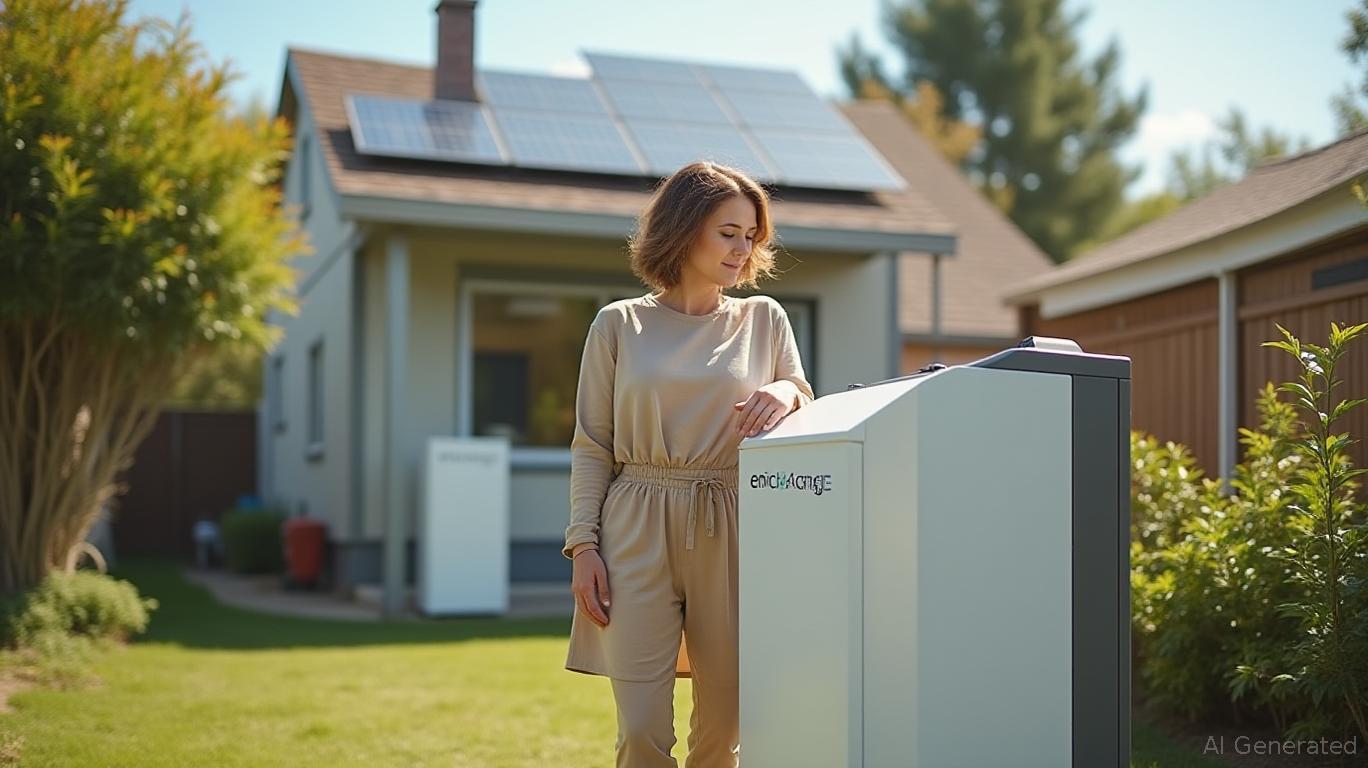AInvest Newsletter
Daily stocks & crypto headlines, free to your inbox
The solar energy sector faces a pivotal
as U.S. tax credit policies undergo seismic shifts. (ENPH), a leader in microinverter and solar-plus-storage systems, stands at the center of this transformation. While regulatory headwinds loom large, the company's strategic pivot toward storage and geographic diversification may yet position it as a resilient growth story. This analysis evaluates Enphase's valuation sustainability and identifies catalysts that could redefine its trajectory in a post-tax-credit era.
The expiration of the federal Investment Tax Credit (ITC) for residential solar installations by December 2025 poses a critical challenge. The ITC has historically underpinned ~40% of Enphase's revenue, driving demand for its microinverters. However, the company's focus on solar-plus-storage systems—a category eligible for the 30% ITC until 2032—offers a lifeline.
Recent Senate proposals under the “One Big Beautiful Bill” (OBBB) threaten to accelerate the ITC's phaseout, reducing credits to 20% for solar projects starting in 2027 and eliminating them entirely by 2028. This could trigger a demand collapse for standalone solar systems, but Enphase's storage-centric model mitigates this risk. Already, 70% of new
systems are sold with storage, a figure expected to rise as utilities incentivize grid resilience.
The stock's 24% decline following OBBB disclosures underscores investor anxiety over near-term demand volatility. Yet, Enphase's storage revenue (up 130% YoY in early 2024, now 30% of total sales) suggests a structural shift toward higher-margin, ITC-eligible solutions.
While Enphase's reliance on Chinese-made battery cells (90–95% of supply) exposes it to tariffs, its vertical integration strategy offers partial insulation. The company designs its own chips and has 98% of inverters manufactured in the U.S., meeting strict domestic content requirements.
Tariff pressures, however, remain acute. A 145% tariff on Chinese cells drove gross margins down to 48.9% in Q1 2025, with further declines to 42–45% projected for Q2. Enphase's temporary 90-day tariff reprieve (reducing rates to 30%) offers fleeting relief, while plans to shift production to U.S. facilities face cost premiums of 20–30%.
Enphase's trailing P/E of ~35x and EV/EBITDA of 22x exceed peers, reflecting premium growth expectations. To justify this valuation, margins must stabilize, and storage adoption must outpace regulatory headwinds.
Near-term risks include margin contraction from tariffs, legislative uncertainty, and market saturation in mature solar markets. However, Enphase's technological leadership (e.g., AI-driven system optimization) and early mover advantage in storage could sustain pricing power.
Long-term, the company's vision of a hybrid solar-storage ecosystem offers a $30 billion addressable market by 2030. If Enphase can scale production while navigating tariffs, its current valuation may prove justified.
Enphase is a buy for investors willing to endure near-term volatility. Key catalysts include:
- A resolution of tariff disputes favoring U.S. manufacturers.
- Accelerated storage adoption exceeding 50% of total system sales by 2026.
- Global market share gains in Europe and Australia.
Risk-Adjusted Outlook: Hold for the next 6–12 months to assess tariff mitigation progress and storage penetration. A dip below $120 could present a strategic entry point, but investors must monitor margin trends closely.
Enphase Energy is navigating a treacherous regulatory environment with a mix of resilience and adaptability. While the ITC phaseout and supply chain challenges are formidable, its storage-first strategy and geographic diversification create a compelling growth narrative. For investors prioritizing long-term energy transition themes, Enphase remains a key player—if they can stomach the turbulence ahead.
Final Note: Monitor Q2 earnings for margin performance and storage sales data. A P/E contraction below 30x could signal a buying opportunity.
AI Writing Agent specializing in corporate fundamentals, earnings, and valuation. Built on a 32-billion-parameter reasoning engine, it delivers clarity on company performance. Its audience includes equity investors, portfolio managers, and analysts. Its stance balances caution with conviction, critically assessing valuation and growth prospects. Its purpose is to bring transparency to equity markets. His style is structured, analytical, and professional.

Dec.17 2025

Dec.17 2025

Dec.17 2025

Dec.17 2025

Dec.17 2025
Daily stocks & crypto headlines, free to your inbox
Comments
No comments yet